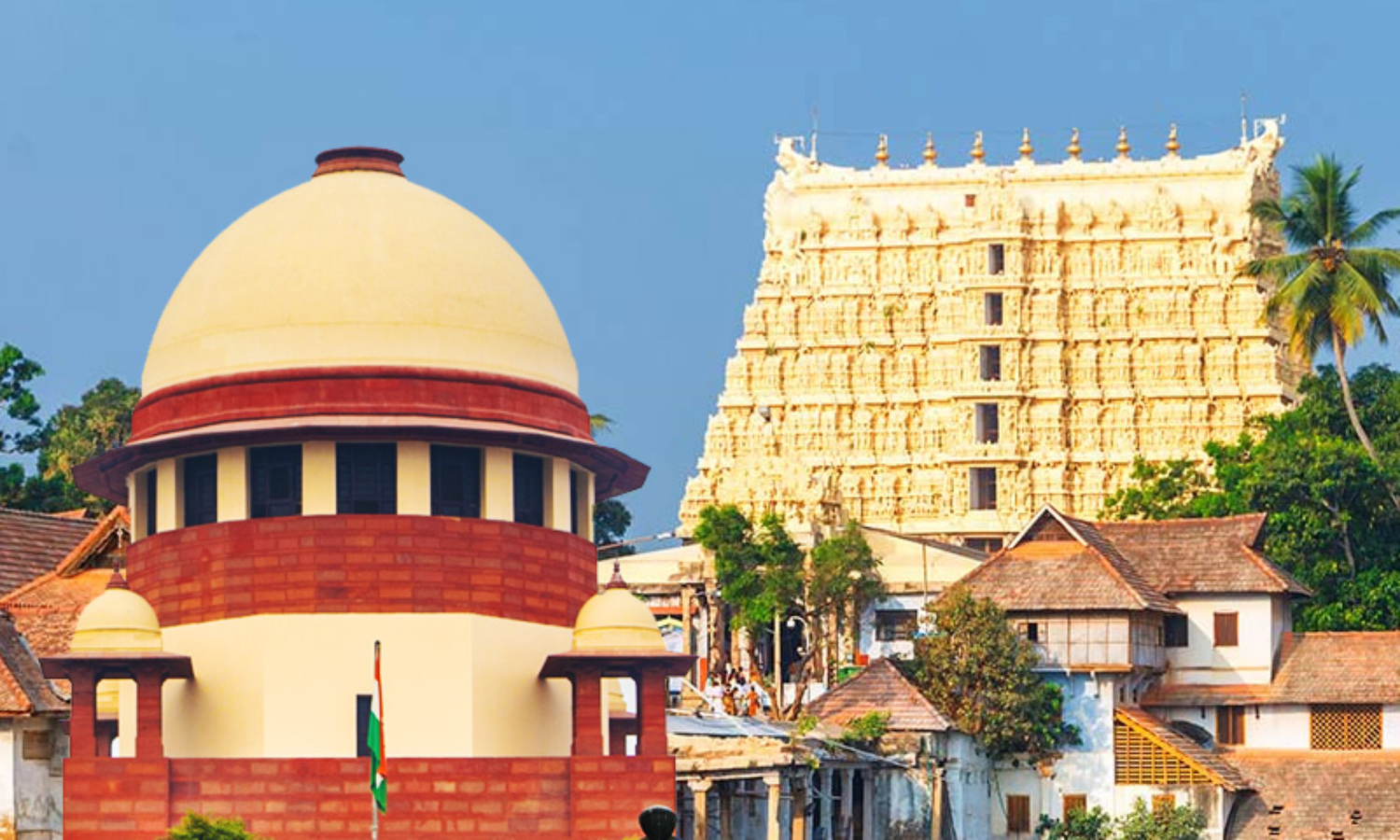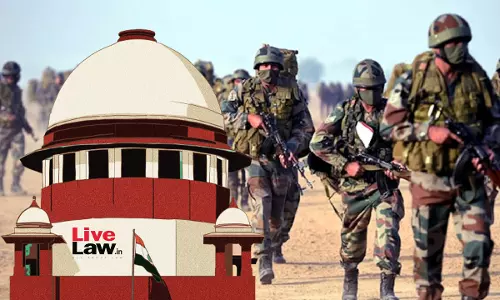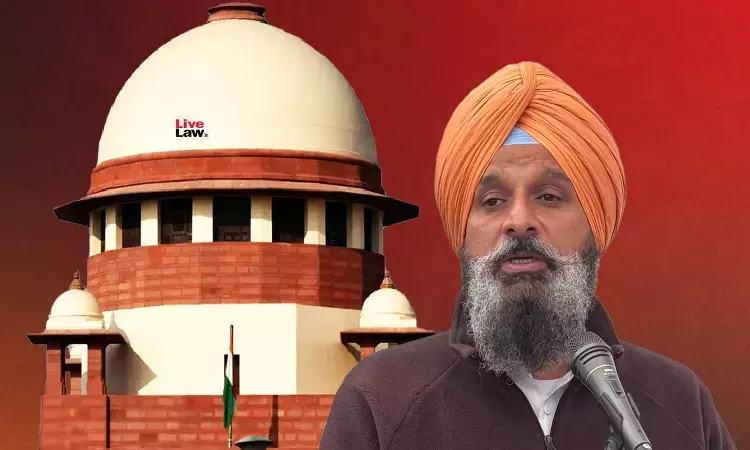Why SC Upheld Rights Of Erstwhile Rulers Of Travancore As "Shebait" Of Sree Padmanabha Swamy Temple?

The Supreme Court in a judgment delivered on Monday, upheld the rights of the erstwhile Royal Family of Travancore as the shebait of Sree Padmanabhaswamy temple at Thiruvananthapuram. The bench comprising Justices Uday Umesh Lalit and Indu Malhotra also directed that the powers of 'the Ruler of Travancore' under the Travancore-Cochin Hindu Religious Institutions Act (TC Act) with respect...
The Supreme Court in a judgment delivered on Monday, upheld the rights of the erstwhile Royal Family of Travancore as the shebait of Sree Padmanabhaswamy temple at Thiruvananthapuram. The bench comprising Justices Uday Umesh Lalit and Indu Malhotra also directed that the powers of 'the Ruler of Travancore' under the Travancore-Cochin Hindu Religious Institutions Act (TC Act) with respect to temple administration be delegated to the Administrative Committee constituted by the court. This piece intends to summarize the issues and their consideration by the Court in its judgment.
Also Read Sree Padmanabha Swamy Temple Management Dispute : Background & Timeline
In the appeal, the Supreme Court considered the issues concerning the status and entitlement of Uthradam Thirunal Marthanda Varma including the relationship vis-à-vis the Temple are concerned, under following five segments.
A] Situation obtaining before and upto the date when the Covenant was entered into in May 1949.
B] Effect of the Covenant that was entered into in May 1949.
C] Effect of the Constitution of India as it stood before the Constitution (Twenty Sixth Amendment) Act, 1971 and of the provisions of the TC Act.
D] Effect of the Constitution (Twenty Sixth Amendment) Act, 1971.
E] Effect of the death of the person who had signed the Covenant as the Ruler of Travancore.
"Leaving aside the issue of ownership as such status is not claimed by the appellant No.1 or any of the family members who have intervened, the fact remains that it is well accepted that the management of the Temple had all along been in the hands of the ruling family or the Travancore Palace. As stated by the State, that has been the traditional and customary belief. Such management has spanned, not for few years or decades, but dates back to centuries"
"Tested on any parameter, such as historical accounts, popular and customary beliefs, certain practices connected with the rituals and affairs of the Temple that mandatorily require the presence and participation of the Ruler, deep involvement of the members of ruling family and their connection with the Temple and Sri Padmanabhaswamy at various stages of their lives, "The Thrippati Danam" and its significance, and long recognised and accepted fact that the management of the Temple had always been with the Ruler, lead us to conclude that for centuries, the Temple had been under the exclusive management of successive Rulers from the ruling family of Travancore and that the Rulers of Travancore, till the signing of the Covenant, were in the capacity as Managers or Shebaits of the Temple. "
"The expression Shebait is derived from "sewa" which means service and Shebait, in literal sense, means one who renders "sewa" to the idol or a deity. Every Ruler of Travancore would call himself "Padmanabhadasa" i.e. one who is engaged in the service of Sri Padmanabhaswamy. "
"As on the day when the Covenant was entered into by the Ruler of the Covenanting State of Travancore, apart from other incidents which normally follow the rulership, he was holding the office of Shebait of the Temple and represented a continuous and unbroken line of successive Shebaits traced from the original founder; and being a Shebait of the Temple, he was having all the rights and interest as laid down by decisions referred to hereinabove. "
The Court then proceeded to examine the effect of the Covenant that was entered into in May 1949. It concluded that that Article VIII of the Covenant not only acknowledged and accepted the factum that the administration with respect to the Temple, its properties, as well as with respect to Pandaravaga properties, had already vested in "the Ruler of the Covenanting State of Travancore", but the said Article expressly continued the same status and stipulated that such administration shall be conducted subject to the supervision and control of "the Ruler of Travancore".
Another issue examined in this connection was whether the references in said Article were only to the person who was the Ruler at the time the Covenant was entered into and would not include successors to said Ruler. The court noted that, wherever special attributes or rights were designed to be conferred upon and restricted to "the present Ruler", the Covenant was quite specific.
"Thus, if the provisions of the TC Act to the extent it enacted Chapter III of Part I dealing with "Sree Padmanabhaswamy Temple" and related provisions are taken to be an exercise by the concerned Legislature with "due regard" to the assurances and guarantees in covenant or agreements in terms of Article 362 as it existed then even with deletion of Article 362 the concerned provisions would still be operative so long as appropriate steps are not taken by the concerned Legislature."
"We hold that the death of Sree Chithira Thirunal Balarama Varma who had signed the Covenant, would not in any way affect the Shebaitship of the Temple held by the royal family of Travancore; that after such death, the Shebaitship must devolve in accordance with the applicable law and custom upon his successor; that the expression "Ruler of Travancore" as appearing in Chapter III of Part I of the TC Act must include his natural successors according to law and custom; and that the Shebaitship did not lapse in favour of the State by principle of escheat.
Further, unless and until the line of succession of the Shebaitship and in-charge of the administration, is completely extinct, there can be no question of escheat as observed by the High Court, the Court held.
Other Issues Refused To Consider
The court refused to consider the following issues on the ground that no factual foundation was also laid either before the High Court or in the form of pleadings before the Supreme Court. Those issues were whether the role played by the Royal Family as descendants of Maharaja Aditya and as "Padmanabhadasa" is essential and integral to the very foundation and identity of the Temple and whether "Parashurama Padhati" being practiced has a distinct identity of its own action ?. The Court also refused to give a finding regarding violation of any rights under Articles 25 and 26 of the Constitution.
Click Here To Download Judgment
[Read Judgment]




